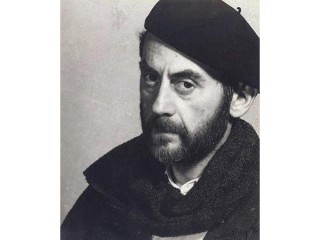
Man Ray biography
Date of birth : 1890-08-27
Date of death : 1976-11-18
Birthplace : Philadelphia, Pennsylvania, U.S.
Nationality : American
Category : Historian personalities
Last modified : 2011-10-25
Credited as : artist painter, photographer, Dada movement
Man Ray, painter, photographer, and object maker, was the principal American artist in the Dada movement.
Man Ray was born in Philadelphia, Pa. on August 27, 1890. In 1908 he studied painting at the National Academy of Design in New York City. He made his first abstract painting in 1911 and held his first one-man show in 1912. Before meeting the Dadaist artist Marcel Duchamp in 1915, Ray worked in a quasi-cubist fashion. His oil painting The Rope Dancer Accompanies Herself with Shadows (1916) shows the influence of synthetic cubism in the way forms are put together; but the influence of Duchamp is evident in the concern with movement, as seen in the repetitive positions of the skirts of the dancer.
After 1917, the year that Ray became important in the New York Dada group, he gave up conventional methods of painting. He became an object maker and adopted various mechanical and photographic methods of image making. A 1918 version of the Rope Dancer combined a spray-gun technique with pen drawing. Among his "ready-mades" was the Gift (1921), a flatiron with metal tacks. His Enigma of Isidore Ducasse featured a mysterious object (a sewing machine) wrapped in a cloth tied with cord. At that time he was working, too, with airbrush on glass, as seen in the Aerograph (1919).
In 1920 Ray helped Duchamp make his first machine, the Rotary Glass Plate, which was composed of glass plates turned by a motor—one of the earliest examples of kinetic art. With Katherine Dreier and Duchamp in 1920 Ray was instrumental in founding the Societe Anonyme, an itinerant collection which in effect was America's first museum of modern art. (The collection was given to the Yale University Art Gallery in 1941). Before settling in Paris in 1921, Ray teamed up with Duchamp to publish the one issue of New York Dada (1921).
Ray was interested in obtaining unusual effects through certain photographic processes. In 1921 he created his Rayographs, which were made without the use of a camera, by directly exposing to light sensitized papers on which various objects were placed. Strangely abstract forms resulted. He published an album of 12 Rayographs entitled Les Champs delicieux (1923). Ray also exploited the photographic technique of solarization, a process of over-and underexposing negatives which resulted in prints with strange "bleached" effects. The photograph of Andre Breton (1931) is an example of this process.
By 1924 Ray was associating with many of the surrealists in Paris, and that year he contributed illustrations to the first issue of La Revolution surrealiste. In 1926 he had a retrospective exhibition of his paintings and objects at the Gallerie Surrealiste. In 1928 he made the film L'Ãtoile de mer, and, the following year, at the home of the Vicomte de Noailles, he filmed Les Myste‧res du chateau de des. In 1933 Ray participated in the surrealist group show "Exposition Surrealiste." He participated in many major surrealist exhibitions, took up surrealist causes, and illustrated surrealist publications.
In 1940 Ray returned to America and settled in California, where he taught photography. He contributed to Hans Richter's film Dreams That Money Can Buy (1944). In 1947 Ray participated in the last major surrealist group show in Paris. After 1949 he maintained a studio in Paris, where he evolved new methods for printing color photographs.
From the early 1950s until his death in 1976, Man Ray lived in France. He spent that time working on a variety of different projects. He was one of the first artists to begin working with airbrush. He spent the last years of his life experimenting with photography, organizing exhibits and writing. He is still considered the pioneer of the 1960's style of pop art.
















